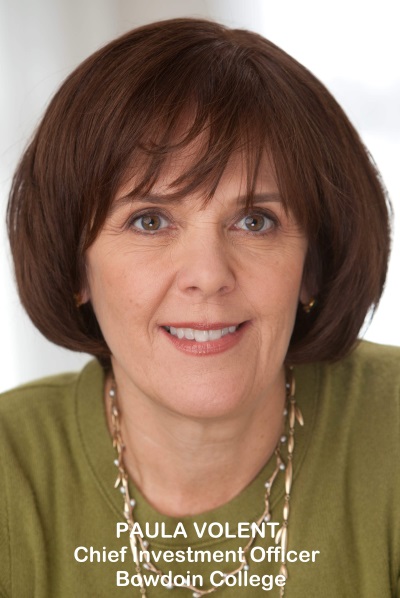Five-year endowment performance: no bed of roses
by charles | Comments are closed12/19/2018
Five-year endowment performance: no bed of roses
Chief investment officers at endowments, foundations, and family offices are the top guns of the institutional investment world. They have an infinite investment horizon, a global playing field, and can invest in anything anywhere – within the broad policy limits set by their institution.
We, and many others, regard the CIOs at major American universities and foundations as the best of the best.
We lean heavily on university endowments for our performance studies and benchmarks because that’s where the data is.
Foundations, family offices, and Wall Street firms employ top investment professionals, but it’s difficult to extract meaningful data from opaque sources. So, we go with what we can get.
A five-year return: the Goldilocks number
Institutions go on forever, but chief investment officers unfortunately don’t.
Five-year returns give us a good — albeit imperfect – picture of how CIOs are doing their jobs. A longer timeframe would blur the responsibility for results as CIOs come and go.
In our chart below, the median tenure of CIOs happens to be exactly 5 years. (The mean is higher, tipped by a handful of very senior CIOs.)
In our SEER reports (aka: Skorina’s Enhanced Endowment Reports) we use the five-year rankings for our own headhunting purposes, and we let you look over our shoulders.
Boards and investment committees set broad policies. Executing those policies in the day-to-day scrum of the markets — especially in the hiring, firing and monitoring of external managers — is the province of the CIO and his/her staff. As recruiters, we try to understand who’s doing it well, or not so well.
Risk versus return – it’s personal
We know that nominal returns don’t reflect the different risk-appetites of different investors; and ranking doesn’t tell the whole story.
There may be good reasons why one institution prefers a more, or less, conservative risk-return trade-off versus its peers. We’ll say more on that point down below. But five-year nominal return is our starting point.
Our dataset consists of 34 big, over $1 billion AUM, North American endowments reporting as of early December.
That’s only about a third of the whole big-endowment roster. It leaves about 50 who have yet to be heard from, and another dozen or so who disdain to report their returns at all, even when we ask politely.
But our gang of 34 is big enough to show us how the whole league has performed, and it includes many of the brand-name schools and all the traditional Ivys.
Read More »Alex Doñe, promoted to CIO, NYC Bureau of Asset Mgmt
by charles | Comments are closed12/11/2018
Alex Doñe, promoted to CIO, NYC Bureau of Asset Management
Former interim CIO, head private markets, private equity, x US Department of Commerce, x KPMG, x Merrill Lynch 11yrs, AB Princeton
Read More »Chief Investment Officer Pay in 2018/2019
by charles | Comments are closed12/08/2018
Our projections – Growth slowing to 7 percent for endowment CIOs
Back in October, we reported the latest-available compensation numbers for 74 chief investment officers at the biggest (over-$1 billion AUM) endowments.
We used the most recent filings for our data, but those numbers (for calendar year 2015) were already pretty stale.
As we said then, the hitch is the long time-lag — more than two years — before IRS data is publicly available.
Now we’re back with our own estimates of what these CIOs are actually making right now, in real time, extrapolating from 2015 to 2018.
We find that typical CIO pay has been growing at a compound rate of more than 7 percent per year
We looked at a large subset of those original 74 CIOs, 32 who had held office for five consecutive years, 2011 to 2015. It’s a big enough and inclusive-enough subset (big and small, public and private, geographically diverse) that we feel comfortable projecting our findings to the whole population of 74 CIOs.
From that time-series we projected out three more years to get point-estimates for 2018.
(To be clear, this is total W2 compensation, including base, bonus and “other” as classified by the IRS. It omits other benefits which are not taxable to the CIO, but which may be significant.)
The median big-endowment CIO made approximately $609,000 in 2011. Five years later, in 2015, he or she was making about $1,100,000. That’s a rise of about 80 percent over five years.
Stated as a compound annual growth rate (CAGR), that’s 12.6 percent per year.
But that’s based on historical data. We then needed to push our trendlines out from 2015 to 2018, for which we have no data. So, stand back, some freshman math is required.
We found that CIO pay is still growing briskly, but that the growth rate seems to be slowing in recent years.
From 2015 to 2018, we estimate that the median CIO in our sample grew his/her pay from $1,100,000 to $1,380,000, for a rise of 26percent over three years.
As a CAGR, that’s 7.1 percent per year.
The chart below shows the pay for the 32 CIOs in our study and projections for the 21 who are still in office this year.
Read More »


